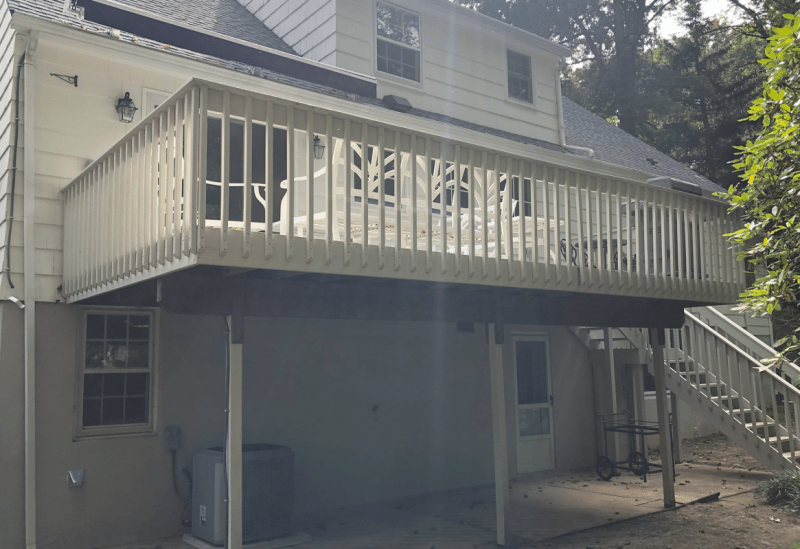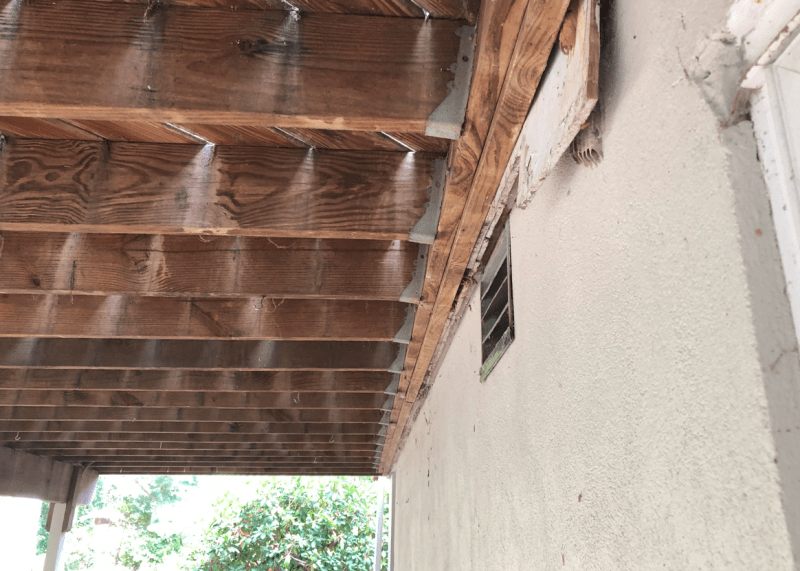I recently inspected a deck for a client where they had a rear deck off of the second story with a double ledger board attached over cedar shake siding. The IRC prohibits fastening a ledger to masonry veneer/stone or to a cantilevered flooring system but does not go over this issue. This just strikes me as poor building techniques and I would probably recommend that they add a beam beneath the joists and in front of the ledger to make the deck free-standing. You can even see the ledger being slightly rotated in the attached image, following the contour of the cladding. Would anyone disagree with this assessment?




